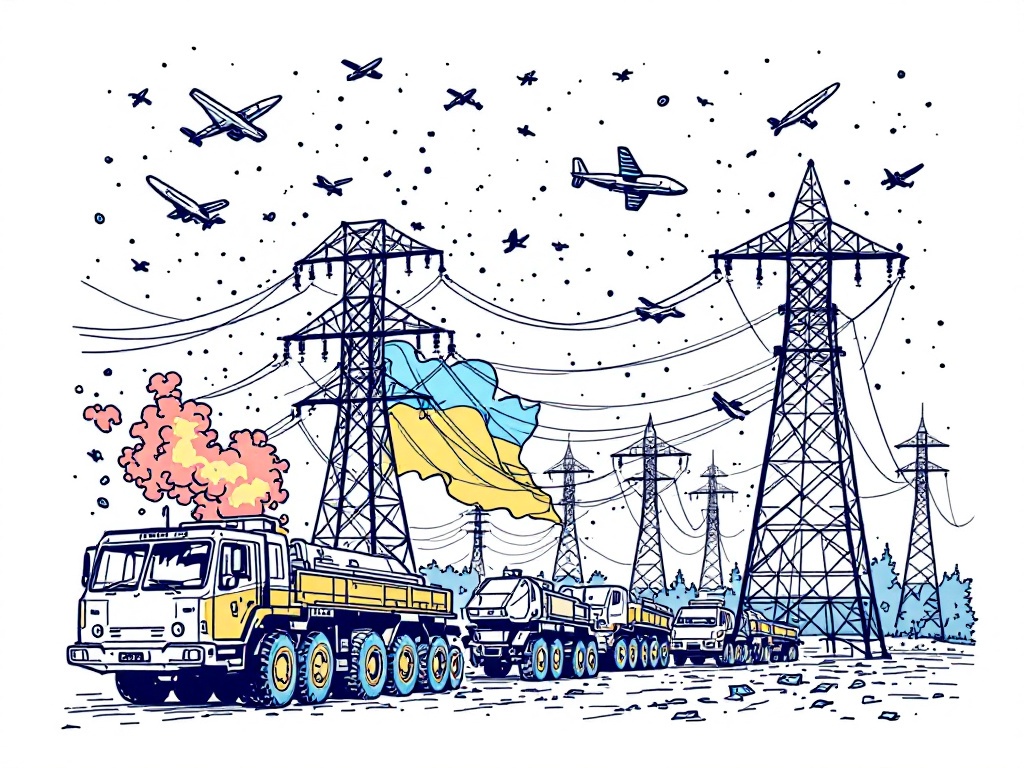Russia Launches Largest Aerial Attack of 2024 on Ukraine's Power Grid

Kyiv, Sunday, 17 November 2024.
In a devastating overnight assault on November 17, Russia unleashed 120 missiles and 90 drones across Ukraine, killing at least nine civilians and severely damaging critical energy infrastructure. The attack, targeting multiple regions including Kyiv and Odesa, marks a significant escalation as winter approaches, threatening widespread power outages and disrupting essential services. Ukrainian air defenses intercepted 144 targets, while neighboring Poland scrambled fighter jets in response to the massive strike.
Strategic Targeting of Energy Infrastructure
The recent Russian offensive has brought Ukraine’s energy infrastructure into the spotlight once again, with President Volodymyr Zelensky emphasizing that the strikes were aimed squarely at power generation and transmission facilities[1]. This marks the eighth significant attack on Ukraine’s energy facilities this year[2], underscoring a critical component of Russia’s strategy to destabilize the country by crippling its energy supplies as the harsh winter sets in.
Humanitarian Impact and Regional Responses
The humanitarian toll of the attack is severe, with at least nine people confirmed dead and several others injured[3]. In cities like Kyiv, Odesa, and Dnipro, emergency services are grappling with the fallout, managing widespread blackouts and disruptions to heating and water supplies[2]. Hospitals in affected regions have resorted to generators to maintain critical operations[1]. Neighboring Poland has responded by scrambling fighter jets and increasing patrols as a precautionary measure, highlighting the regional security concerns posed by these escalations[2].
International Reactions and Future Implications
The international community is on high alert, with the attack prompting discussions among Western allies about bolstering support for Ukraine’s energy infrastructure and defense capabilities[3]. The European Union and NATO members have reiterated their commitment to supporting Ukraine, but concerns linger about the potential waning of Western support following Donald Trump’s reelection as U.S. president[3]. Ukrainian President Zelensky has called for increased aid to rebuild the energy grid and enhance aerial defenses, aiming to resolve the conflict through diplomatic means by 2025[3].
Geopolitical Tensions and Strategic Developments
The attack is not only a demonstration of military might but also a strategic maneuver in Russia’s broader geopolitical playbook. With President Vladimir Putin reportedly unwilling to negotiate unless Ukraine concedes occupied territories[3], the situation remains tense. This latest development also coincides with ongoing cyber incidents and espionage activities, reflecting a multifaceted approach to destabilizing Ukraine[4]. As the conflict nears its third anniversary, the stakes are higher than ever, with both sides maneuvering for advantage amidst a backdrop of international diplomacy and regional security dynamics.